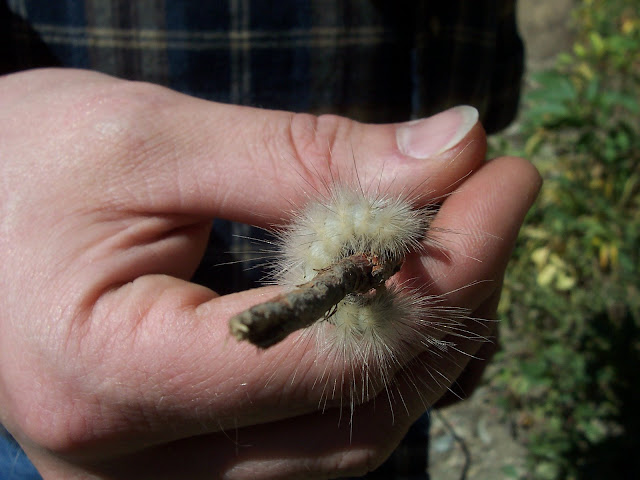 We wandered into our Avalanche Creek campsite at night and woke up to this. There is a nice easy trail at the campground (the Trail of Cedars), which meanders through a section of forest that, amazingly, hasn't burned since the 1600s. We strolled along it after breakfast and admired the sylvanity of it all.
We wandered into our Avalanche Creek campsite at night and woke up to this. There is a nice easy trail at the campground (the Trail of Cedars), which meanders through a section of forest that, amazingly, hasn't burned since the 1600s. We strolled along it after breakfast and admired the sylvanity of it all.
This water (Avalanche Creek) was snow the day before.
 Melissa and Esther played Keebler elves in a hollow cottonwood tree. The cottonwoods around here were super tall and straight, unlike the Nebraskan ones we're used to (think wider and branchier). This one was still very much alive, despite its hollowness.
Melissa and Esther played Keebler elves in a hollow cottonwood tree. The cottonwoods around here were super tall and straight, unlike the Nebraskan ones we're used to (think wider and branchier). This one was still very much alive, despite its hollowness. For eons, Avalanche Creek has flowed through a narrow gorge and carved bowls and weird Gaudi-esque Art Nouveau shapes into solid bedrock (pink=granite, right Dad?).
For eons, Avalanche Creek has flowed through a narrow gorge and carved bowls and weird Gaudi-esque Art Nouveau shapes into solid bedrock (pink=granite, right Dad?). 
The cedars have pretty shallow roots for being as tall as they are. I wonder how long ago this monster tipped over.
 After the hike we took to the road. There are an abundance of silvery threadlike waterfalls all over the place. Once you get to the mountain part of the road, the bridges don't cross streams--they span waterfalls.
After the hike we took to the road. There are an abundance of silvery threadlike waterfalls all over the place. Once you get to the mountain part of the road, the bridges don't cross streams--they span waterfalls. We like the colors in this picture. This chunk of mountain is the beginning of what's called the Garden Wall.
We like the colors in this picture. This chunk of mountain is the beginning of what's called the Garden Wall. We're almost to the top now, looking down at a spectacular glacial valley. Which reminds me: not to be too political or anything, but Mr. Gore is doing the science a disservice when he laments the fact that Glacier National Park won't have any glaciers in it by 2050 or so. Well, Al, it wasn't named "Glacier National Park" because of the glaciers in it now, which are puny little modern glaciers, and did nothing to create the present scenery. It was so-named because of the humongous glaciers that carved out the landscape like giant spoons long, long, loooooooong ago, and disappeared tens of thousands of years before the first Ford Excursion blighted this fair planet. We aren't helped by sentimentality for that which never was.
We're almost to the top now, looking down at a spectacular glacial valley. Which reminds me: not to be too political or anything, but Mr. Gore is doing the science a disservice when he laments the fact that Glacier National Park won't have any glaciers in it by 2050 or so. Well, Al, it wasn't named "Glacier National Park" because of the glaciers in it now, which are puny little modern glaciers, and did nothing to create the present scenery. It was so-named because of the humongous glaciers that carved out the landscape like giant spoons long, long, loooooooong ago, and disappeared tens of thousands of years before the first Ford Excursion blighted this fair planet. We aren't helped by sentimentality for that which never was. next: the Hudson Bay and Atlantic sides





















